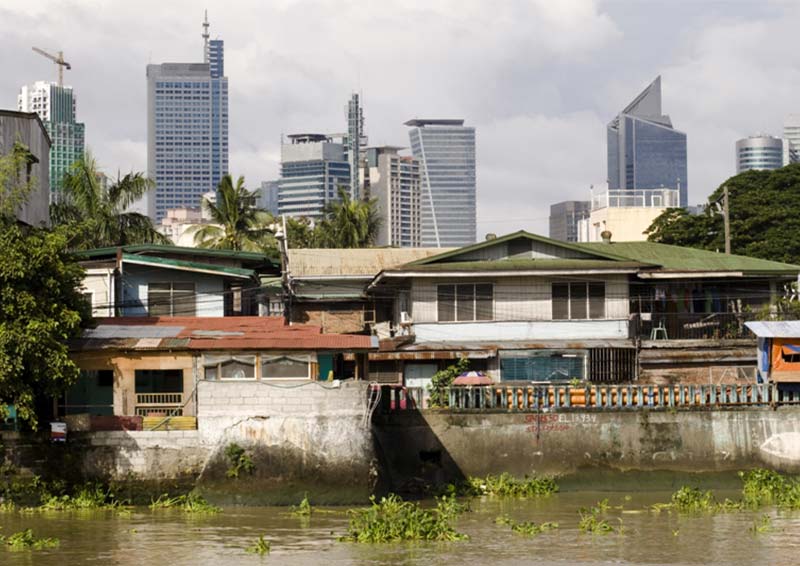Social sustainability vs environmental sustainability
When it comes to infrastructure, are opportunities being missed that could create lasting value for all stakeholders? An article by Mott MacDonald's Davide Stronati.
Contents |
[edit] Introduction
We commonly talk about the three pillars of sustainability – economic, environmental, and social. Yet the social pillar tends to attract the least attention when we’re thinking about infrastructure projects.
Infrastructure is rightly seen as requisite for economic growth, and environmental protection is now seen as fundamental to the progress of projects. This is all as it should be. But rarely is attention paid to who in society benefits most from economic infrastructure.
The reality is that the dividend is unequal and we all know that inequality breeds insecurity – and that poses a fundamental risk to society. At the extremes, it provokes conflict between the ‘haves’ and the ‘have nots’ which can manifest itself in many ways: crime, civil disobedience and even war. It’s clear that the world is a more fragile place when it leaves large sections of society behind in the pursuit of growth.
[edit] We still need environmental sustainability
I am not suggesting that environmental sustainability is no longer important. On the contrary, the link between environmental sustainability and social outcomes is even more crucial when you think of the importance of maintaining an environment for healthy and prosperous lives.
Climate change, air pollution, water quality and availability, ecosystem fragility, species loss – all are issues that impact directly on our health and wellbeing, and thus on society at large. The mass migration of people we’re seeing are not just the result of conflict but also of environmental degradation, the struggle to survive and the desire of people living at the margins to find a better life.
[edit] But we need social sustainability as well
In the infrastructure sector we work towards building the communities of tomorrow and what’s become increasingly clear in recent times is that we have an obligation to provide solutions that are more inclusive and to play our part in addressing inequalities. We need to remember that most, if not all, of what we do is about improving people’s lives.
It’s easy to lay the blame for deepening inequality at the feet of others but all of us in the infrastructure industry – clients, investors, consultants, contractors and suppliers – need to change the way in which we think about projects,and the way we conduct business. We need to help foster more socially inclusive outcomes.
[edit] Delivering UN SDGs for all through infrastructure
In September 2015, the UN launched 17 Sustainable Development Goals (SDGs) to end poverty, protect the planet and ensure prosperity for developed and developing countries alike. Unlike the Millennium Development Goals, which were only for the developing world, the SDGs are for everyone.
Our industry has an obligation to contribute to their fulfilment. Planned and delivered with thought, infrastructure can enable outcomes that help resolve many of the challenges we face as a society today and will face tomorrow.
In July 2018, in order to help us achieve the SDGs ICE’s Sustainability Leadership Team is hosting a half day seminar to showcase leading infrastructure projects that have embedded social value as a key project outcome.
These projects reveal both elegant design solutions that ‘take infrastructure to another level’, and the unexpected opportunities available to our sector from being open to frank community engagement responses.
This article was originally published here on 26 June 2018 by Davide Stronati, Mott MacDonald Global Sustainability Leader.
--The Institution of Civil Engineers
[edit] Related articles on Designing Buildings Wiki
- Articles by ICE on Designing Buildings Wiki.
- Creating strong communities – measuring social sustainability in new housing development.
- How can suppliers practice what they preach on sustainability.
- Social Sustainability at Master-planning Stage.
- Sustainable development.
- Sustainable development: energy challenge.
- Why engineers need to know more about existing infrastructure.
Featured articles and news
The Architectural Technology Awards
The AT Awards 2025 are open for entries!
ECA Blueprint for Electrification
The 'mosaic of interconnected challenges' and how to deliver the UK’s Transition to Clean Power.
Grenfell Tower Principal Contractor Award notice
Tower repair and maintenance contractor announced as demolition contractor.
Passivhaus social homes benefit from heat pump service
Sixteen new homes designed and built to achieve Passivhaus constructed in Dumfries & Galloway.
CABE Publishes Results of 2025 Building Control Survey
Concern over lack of understanding of how roles have changed since the introduction of the BSA 2022.
British Architectural Sculpture 1851-1951
A rich heritage of decorative and figurative sculpture. Book review.
A programme to tackle the lack of diversity.
Independent Building Control review panel
Five members of the newly established, Grenfell Tower Inquiry recommended, panel appointed.
Welsh Recharging Electrical Skills Charter progresses
ECA progressing on the ‘asks’ of the Recharging Electrical Skills Charter at the Senedd in Wales.
A brief history from 1890s to 2020s.
CIOB and CORBON combine forces
To elevate professional standards in Nigeria’s construction industry.
Amendment to the GB Energy Bill welcomed by ECA
Move prevents nationally-owned energy company from investing in solar panels produced by modern slavery.
Gregor Harvie argues that AI is state-sanctioned theft of IP.
Heat pumps, vehicle chargers and heating appliances must be sold with smart functionality.
Experimental AI housing target help for councils
Experimental AI could help councils meet housing targets by digitising records.
New-style degrees set for reformed ARB accreditation
Following the ARB Tomorrow's Architects competency outcomes for Architects.
BSRIA Occupant Wellbeing survey BOW
Occupant satisfaction and wellbeing tool inc. physical environment, indoor facilities, functionality and accessibility.

























